They share results, how they have developed their products and services, and the most efficient way to do this. We also talk about profit margins, marketing methods, shipping & delivery and selling in-store.
Topics covered include:
- Take Away Food and Meal Kits
- Coffee Beans and Coffee Equipment
- T-Shirts, Clothing and Souvenirs
- Sauces, Pickles and Jams
- Food Truck Sales
- Gift Vouchers and Charity Sales
Guest experts include:
- David Bitton - Bitton Gourmet, Sydney - long-time retailer of sauces, pickles & jams as a bonus to cafe sales
- Jill Henderson - The Winey Cow, Mornington VIC - doing great sales with t-shirts, hoodies, wine & beer glasses
- Sean Brandon - Givex Gift Cards - a surprisingly easy source of extra income
- Sam Keck - Commonfolk Cafe & Coffee Roaster, Mornington VIC - bigger than ever sales of coffee beans to their takeaway customers
- Joshua DeLuca & Tim Rosenstrauss from Burgerhead, Penrith NSW - food trucks and popups
- High Whitehead - Little Green Corner, Geelong VIC, doing food delivery for subscribers
How to Diversify and Boost Your Cafe and Restaurant Sales - Key Points
David Bitton from Bitton Gourmet in Sydney:
We now focus mainly online. We focus on giving value, not being a low price, and our database has been an incredible value. We built an organic database over 20 years, and I think we have 19,000 people. When we send an EDM, you got an instant response. You buy that through years of work. So, events and products, and hampers are quick examples. And Mother's Day is our biggest day of the year.
When we opened 20 years ago we had a little coffee shop in Alexandria. We start positioning of products into some key stores, and then when we couldn't make it, we went to a factory. Small factory where we have control of the product, because we wanted integrity. So quite quickly we went to a manufacturing level to have a consistency of the product.
Hugh Whitehead from Little Green Corner in Geelong, Vic:
Our offering, as a café, was all about connecting, and we had a really nice community. This new Covid situation means we have to do something different. Totally different. We started The Good Meal Project, making and delivering meals to people's homes. We do one meal each week, for the week, and then we change it. The vast majority of our weekly orders are subscription orders. So, we already know next week what we need to buy and to make. We also have add-on sales like wine, jams and desserts, so it's rare for people to just pay the basic amount.
Tim Rosenstrauss and Joshua DeLuca from Burger Head in Penrith NSW:
Not many burger joints have a culinary background like we do. And that plays a part in securing our brand. We mince our own beef, make our own pickles, make our own sauces, and that really stands out in the product. We have been able to keep all our staff. We actually increased sales, getting the food truck out, starting our own delivery. Our team's grown by eight employees this year. 27 people now.
We added a food truck to grow another revenue stream without the big upfront cost, like fitting out a shop. On Friday night it will go out and we will have one person to mince X kilos of beef for the shop. He can now double it for the truck and it utilises the same labour. It keeps quality the same. We see efficiencies in labour with the truck, but we only achieve that because we've got the store and the space for the truck to load up. We use Facebook and Instagram mainly for marketing, plus our email newsletter.
Sean Brandon from Givex:
People are looking to support their local venues more, and one way is to buy Gift Cards. With closures, people are saying, "How do we support our local coffee chain? How do we support our local restaurants?" And Gift Cards is one of those ways.
We see spikes at Mothers and Fathers Day, and Christmas, from both a digital and physical perspective. Digital Gift Cards are obviously gaining traction, but physical Gift Cards are still very popular. Have your gift cards displayed prominently at the counter. Tell your staff about them, tell your customers about them, and make sure there is an easy way for customers to buy. Offer a B2B solution as well. We always think about Gift Cards as being just for B2C. Suggest to businesses that they reward their staff with Gift Cards.
Jill Henderson, The Winey Cow in Mornington, Vic:
We've been doing merchandise for about three years. We made a conscious decision, about three years ago, to focus on Winey as a brand rather than just a venue. So, anything we did beyond our core product was really about an extension of that brand, and trying to build a tribe and a community around Winey Cow. We use our logo, which is our cow, and we find that this sells really well because it's not necessarily a café brand but it's a really nice retail look and feel. We sell or merchandise in-store. Our staff wear all our merchandise - t-shirts, jumpers to work, caps, and beanies.
We have a big database that we promote to through email. We asp use our socials, Instagram and Facebook. But majority of sales are in-store - that is our biggest way of selling.
Sam Keck, Commonfolk Coffee in Mornington, Vic:
The Victorian government has allowed stores with liquor licences to have a temporary licence to sell takeaway or delivered alcohol. So we've been able to pack not just our coffee beans but also our alcoholic beverages, and deliver those or allow customers to take those away. It's proven to be the most profitable of the café offerings we've been able to do during lockdown.
The first lockdown, we did food packs. So, you'd have some local produce as well as some full meals, and you might throw in some alcohol and some beans as well, and we did those through the café. We sold a lot of them and it was definitely good to get the revenue in. But when we crunched the numbers, it wasn't particularly profitable, and we decided this second time around that we would stick to doing what we do well rather than trying to do a little bit of everything.
With retailing coffee beans, make sure you're partnering with a coffee roaster that has a really great reputation. Or maybe you've got your own custom branded product, so the customer can then support you when they're buying their coffee. Secondly, it needs to be front and centre - you cannot make it look like an afterthought because, in my experience, people trust you if they think that you're doing what you're supposed to be doing. You need a really dedicated space where you have volume of coffee product, and make it look really good. If you're looking for good examples to copy, go to the supermarkets and see how they promote product. When they want to sell something, they have a whole heap of it, and make it look like real volume.
Webinar Transcript:
Ken Burgin:
Welcome everyone, it's Ken Burgin here, from SilverChef, and I'm really excited about the big response to the webinar today. We have 6 smart people from different types of businesses, who are going to talk about how they diversified because one thing is for sure in 2020, relying on what you did in 2019 is not going to work very well. So thanks everyone for coming along.
Here are our guests today: two people from Mornington, Jill and Sam. Different types of businesses but they've got plenty of good stuff to talk to us about. David Bitton from Sydney, who I've known for quite a while, he's actually brought along his first product he made 20 years ago. David, you better show everyone.
Sean, from Givex, an excellent gift card solution. Australians have been slow in taking on gift card, but finally, people are waking up a bit.
We have Josh and Tim from Burger Head, in Penrith. One burger shop, food truck, new trailer pop-ups, experimenting with the second brand as well. Plus Hugh, from Geelong, who's done the P-word, pivot, with his business from café to meals, and selling a lot of those meals on subscription.
David, tell us about Bitton. Your business has been around for 20 years!
David Bitton:
We opened in 2000. We had a six table coffee shop and today we've got three restaurants, and a range of gourmet food products we sell around the country and overseas. Five years ago we launched a consulting business, helping the people to open the shop, to develop the product range, all of that based on our experiences and mistakes.
We can take you through to a manufacturing label. From making 10 jars at home to five, six or 7,000 jars in the factory, it's going to be a different product, and that transition is what we've learned. Over 20 years, we're involved in the labelling, the requirements of the labelling, the distribution and the positioning of the product, if you want to start doing some volume.
Ken Burgin:
When do you stop doing it in your own kitchen and look at outsourcing? What's the level?
David Bitton:
When we opened 20 years ago we had a little coffee shop in Alexandria. We start positioning of products into some key stores, and then when we couldn't make it, we went to a factory. Small factory where we have control of the product, we wanted some integrity. So quite quickly we went to a manufacturing level to have a consistency of the product.
Ken Burgin:
So what's innovation for you, especially in the last 12 months? Do you bring in new products and then retire some, or do you keep a very stable range of products?
David Bitton:
Well we try to obviously read the market. Turmeric was big at one stage, so we gave up turmeric oil. We try to sell what people really want and then what doesn't work, eliminate straight away. But the last 12 months of the pandemic, on the 23rd of March, when all the restaurants were told to close, my wife, rightly said, "Listen, it's not about you, it's global. You're going to snap out of it. I feel for the people from Victoria, second lockdown. I try to think outside the square. For takeaway, everybody want takeaway for the restaurant but suddenly we're all fighting for the same slice of cake. So how do you differentiate yourself from other competitors?
We focused mainly online. We focus on giving value, not being a low price, and our database has been an incredible value. We built an organic database over 20 years, and I think we have 19,000 people. When we send an EDM, you got an instant response. You buy that through years of work. So, events and products, and hampers are quick examples. Amd Mother's Day is our biggest day of the year. That's why we make a ton of money on that day.
And suddenly I got three restaurants where I usd to put people in chairs. We do hampers; we get Mother's Day hampers for breakfast, Mother's Day hampers for lunch. We make more money if we sell Mother's Day for the next 20 years on Mother's Day.
Ken Burgin:
So, it's a permanent change in some ways isn't it? We want our customers back but are you going to scale back that takeaway and delivery?
David Bitton:
No, I think it's another channel to generate income. You've got the café, and you've got online orderings. Online orderings, the money is in the bank before you dispatch the product.
Ken Burgin:
It's very nice to wake up in the morning and find people paid you while you were asleep isn't it?
David: We realised that people are spending more money in restaurants. We spend $20 more on a bottle of wine because they want this for themselves. They didn't go to Europe, they didn't go to Bali, they stay at home. We've been locked up. So, spending is much better in our restaurant.
Ken Burgin:
Hello Hugh. I've known Hugh for a few years, and from being café owner in the middle of CBD in Geelong. Suddenly all your customers went away. Tell us how you have changed the business around.
Hugh Whitehead:
Well our offering, as a café, was all about connecting, and we had a really nice community around who would be in our café at any one time. This new situation means we have to do something different. Totally different. We were LITTLE GREEN CNR, our café on a Friday, and what was called The Good Meal Project on the following Monday, making and delivering meals to people's homes. We do one meal each week, for the week, and then we change it. You can see on that slide there what the meal is this week and what's coming up. So it's very simple model, you can buy a single meal but the vast majority of our weekly orders are subscription orders. So, we already know next week... We already know we sold X number of meals each week before we start. In a café, you'd open the door and you ... You have no actual idea what's going to come to you.
Ken Burgin: What proportion of your meal sales is subscription each week, approximately?
Hugh Whitehead: 78%, Ken.
Ken Burgin: Wow, awesome.
Hugh Whitehead:
And that's our week on week. I think at the start there was a little bit of that, "We need to support LITTLE GREEN CNR to stay alive." But now we're hearing and understanding that giving people that one different meal each week really helps.
A meal for Six people. So, it's that kind of larger starter. $70 and slightly less if you're a subscriber.
Ken Burgin:
And you've got other add-ons. I know when we would talk before you said it's rare for people to spend 70 bucks. What's the most popular add-ons that you sell?
Hugh Whitehead:
We've got preserves, they're always changing according to what we've got excess of and what's growing around us. Desserts obviously, there's a couple of pictures there.
Meals are delivered by myself and the kitchen crew, and our front of house staff, buzz off in their own directions and deliver the meals. So, if you're already going to the address, it's obviously lovely to go out and deliver, and sell those extra items as well. It's a simple model and it's worked. We were quick. We had to be quick because of our offering. We didn't have that takeaway offering that a lot of cafés have. We had to be decisive and in the end, it was a real blessing that we had to be decisive, because we couldn't hang on to that coffee trade.
Ken Burgin: so brought your wages bill down quite a bit I'm guessing.
Hugh Whitehead:
We've actually managed to keep our full-time equivalent staff all through this, which had been really pleasing as well. So our revenue has increased a lot, so our staff costs have dropped.
Ken Burgin:
A question from the audience, "What are the must haves for online ordering websites?" I might hold that for a little longer til we've heard from some of the others who are using... Because we've got a variety of people using different websites. That's a great question to ask of you people.
Julian is asking about looking for at home coffee products to complement the meals. Do you sell beans as well or just cups of coffee?
Ken Burgin:
Let’s talk to Josh DeLuca and Tim Rosestrauss about Burger Head.
So, two chefs, real chefs, who decided to do the entrepreneur thing. Tell us how you started.
Joshua DeLuca: I started in fine dining. Apprenticeships and different restaurants, then helped open a restaurant in Surry Hills where I met Tim.
Ken: so what's different about your place? We are not short of cool burger places in Sydney or around the world. What's different for you ? What stands out?
Tim Rosenstrauss:
I would say not many burger joints have this culinary background like we do.
And that plays a part in securing the brand. We mince our own beef, make our own pickles, make our own sauces, and that really stands out in the product.
Ken Burgin:
You make your own mince, Is that cost effective as well as being better quality?
Tim Rosenstrauss:
It's better quality, food costs dropped, but there is a bit more labour obviously, mincing and portioning, but it's a 100% worth it.
Ken Burgin:
Question from Livia: have you managed to maintain your staff? Have you been able to use JobKeeper or did your sales not drop enough?
Joshua DeLuca:
Fortunately we were able to keep all of our staff. We actually increased sales, getting the food truck out, starting our own delivery. Our team's grown by eight employees this year. 27 people now.
Ken Burgin:
Right. So, JobKeeper 2 might not be one for you?
Joshua DeLuca:
Not for us, no.
Ken Burgin:
Interesting challenge if you're too successful. Tell us about your food truck. Tell us how you run it. You both look pretty relaxed.
Tim Rosenstrauss:
the first reason why we initially bought the truck was, we did a pop-up store for six months in Beaumont Hills, and we learned the lesson that it’s easier to run one venue when we're both there, and splitting out time. We learned our lessons with inventory control, systems, management, training, all that stuff. We looked at a truck, originally, to grow another revenue stream without the big upfront cost, like fitting out a shop is. So we picked it out last September and it served us well for, closing in on a year now .
Ken Burgin:
So you bought a second hand one, did someone fit it out to your design?
Joshua DeLuca:
No, it was all custom built. We looked at a couple different builders, couple different trucks from people that we know in Sydney, came up with our specifications and went from there.
Ken Burgin:
So if you're doing a second one, what are doing differently that was missed on the first one? Or did you get it perfect the first time?
Joshua DeLuca:
A few little tweaks here and there; drainage on the floor and storage space plus shelves. It has been a big help.
Ken Burgin:
I think food trucks is something that appeals to a lot of people. I remember talking to someone in the City Council in Sydney, a while back, and they said all the applications they were getting were from existing restaurants or cafés. How do you use economies of scale with your food truck?
Tim Rosenstrauss:
Works pretty well. On Friday night it will go out and we will have one guy to mince an X amount of kilos of beef for the shop. He can now double it for the truck and it utilises the same labour. It keeps quality the same and all that sort of stuff. We see efficiencies in labour with the truck, but we only achieve that because we've got the store and the space for the truck to load up.
Ken Burgin:
How do you promote the truck? How do people know where it's going to be?
Tim Rosenstrauss:
Social Media, mainly, and emails.
Ken Burgin:
What works best, Insta, Facebook or SnapChat, or?
Tim Rosenstrauss:
We use Facebook and Instagram predominantly. So from our main feed, that photo is from our Instagram. Our Instagram highlights, email database and then digital ads.
Ken Burgin:
So you're running ads on Instagram are you?
Joshua DeLuca:
And being in the same locations every week - people know that we're there.
Ken Burgin:
So the predictability. What about the second truck? How's that going to work?
Tim Rosenstrauss:
We're thinking private events and breweries or we'll find more spots like the original truck.
Ken Burgin:
What would you do to speed up the launch process?
Joshua DeLuca:
I think for us it was an easy extension because we had a brand already. Definitely the brand, people knowing where we were. We've been in a few burger expos around Sydney-
Tim Rosenstrauss:
Traditional marketing as well.
Joshua DeLuca:
The traditional marketing, I think we built upon from some of your early podcasts, Ken.
Online is great but surprising somebody with something in their mail; a leaflet, the menu, that can really work.
Ken Burgin:
So good old-fashioned letter-boxing as well.
Joshua DeLuca: Yes for sure.
Ken Burgin:
And do you use Australia posts on addressed mail or do you use a private contractor?
Joshua DeLuca:
I use my younger brothers.
Ken Burgin:
Oh, you use family? , that works. So long as there's a check.
Question from Abdul, about pluses and minuses of ordering websites. What's the platform that you use?
Tim Rosenstrauss:
So, system called MobiGo. Super quick, easy to use, get it up and running very easily, and that works really well. But we're in the midst of swapping to an integrated solution with Point Of Sale, which is RedCat, and that will have an app, a website, the point of sale, all talking to each other with a loyalty programme. So, whether you order on the website, in-store, app, whatever it is, you'll rack up loyalty points and it is a holistic solution.
Ken Burgin:
When I looked at back of house at your place, you had about five different screens from all the different systems, so this is all going to bring them all into one screen is?
Joshua DeLuca:
It will all be integrated.
Ken Burgin: let's jump onto the next guest here, Sean Brandon.
Let’s talk about gift vouchers. I mentioned in the intro that local restaurants are a bit slow on the uptake with gift vouchers, but the customers have been buying them from David Jones and Myer for a long time. So what do you notice now? What can we get set up before Christmas?
Sean Brandon
I'll argue first what's changed. Before COVID, in Australia, most of the inquiries and business that we would do would be mostly retailers. Then since COVID came along, I think Hugh hit on the point before, where people were looking to support their local venues more, and maybe looking at ways that they could buy Gift Cards. I think it hit the media and people saying, "How do we support our local coffee chain? How do we support our local restaurants?" And Gift Cards is one of those ways. So all of a sudden we have a sea of inquiries from people looking to support gift card programs.
In North America and in Europe, Gift Cards in the food and beverage space are massive, both slowly trickling over to Australia. People are really starting to see it as a good additional revenue stream.
Ken Burgin:
What's happened around Father's Day? Are dads being given Gift Cards more than, say, a year ago or are dads still missing out?
Sean Brandon:
It’s obviously seasonally. Things like gift cards are big around father's Day, Mother's Day, Christmas. So we definitely see spikes in that time of year, and spikes from both a digital and physical perspective. So digital Gift Cards are obviously gaining traction, but physical Gift Cards are still something that are very popular. I don't think they're going anywhere anytime soon.
Ken Burgin:
Would you say a restaurant should have a display at the counter? Should they be only digital or should they also have a physical one as well?
Sean Brandon:
Your first point is really important, having a display at the counter. Having your Gift Cards displayed correctly is a good step, but I think a combination of both is a really good starting point. But you don't have to go down the road of both. You can obviously feel out the market to begin with. The beauty about an eGift Card programme is that these cards can be sold 24 hrs a day, 7 days a week, 365 days of the year. Someone doesn't have to physically go to a venue to buy them. And also, are a pretty quick gift as well. At Christmas time we see a massive spike of eGift Cards being sent on Christmas Day, because someone's received a gift and forgotten to reciprocate.
Ken Burgin: And don't forget, everyone, men are hopeless at gift buying. This is perfect for your staff to suggest. If your staff suggest, then the extra magic question when they do buy one, is "Who else is on your list?" Because there's sure to be someone else who would like a $50 card as well.
Sean Brandon:
Exactly. When we talk to restaurants and food venues that are looking to set up a gift card program, a lot of people say that they started one previously, and it was some little gift card book or hand printed. There'll never be a successful programme like that.
Some of the key things here are obviously making sure that you're telling your staff about it, telling your customers about it, and making sure there is an easy way for customers to buy.
Finally, offer a B2B solution as well. We always think about Gift Cards as being a B2C type scenario. But maybe getting businesses involved in helping people reward their staff maybe with Gift Cards.
Ken Burgin:
Christmas present for the staff. It's a very honourable Aussie tradition isn't it?
Sean Brandon:
We can get a card, like an eGift Card programme running in a couple of weeks. Physical cards is something that can take a little bit longer, so in terms of card production, especially as you head towards Christmas, card production can take kind of 18 weeks. We're now 16, 17 weeks from Christmas, so there's still time but it's definitely about planning and, , having a bit of a marketing plan and a strategy in place.
Sean Brandon:
A question about: How do you promote gift cards? Without being invasive and taking up a lot of customers' time? First and foremost is understanding your customer. We all know what annoying is and annoying is probably getting text messages, twice a day, and emails, three times a week, and probably having relevant content to go out to your customers as well. You don't know what it's going to be selling to your customers, you want to be able to inform them, provide education, kind of like what we're doing today with our webinar. And understanding when to communicate the right messages.
Ken Burgin:
And I think us Aussies, I always say we weren't born with a selling gene. I think we could all do with a little more selling pressure, wouldn't do any of us any harm.
Now let's talk to Jill from Winey Cow. Where'd the name come from?
Jill Henderson:
We get asked this a lot. It depends who you're asking. If you ask me, it's because of my love of cheese and wine, and the business initially started out on the premise of being a wine and cheese bar. That quickly changed to what our core product and what it is we do now. We do brunch. We specialise in brunch; morning, noon and night, and we believe that everyone should have brunch at all times of day, and that's what our core product is.
My husband will say it's named after somebody else, but that's because we sell glassware and things like that to people who love the cheekiness of that name so, .
Ken Burgin: Tell us about the changes you had to make in March and then again more recently to your standard restaurant model. Is that family meal packs and things you've got there?
Jill Henderson:
So, this is our merchandise range on this slide. We've been doing merchandise for about three years now. We made a conscious decision, about three years ago, to focus on Winey as a brand rather than as a venue. So, anything we did beyond our core product was really about an extension of that brand, and trying to build a tribe or build a community around Wine Cow, and where they can wear our merchandise but not being in your face, so we don't use our name. We use our logo, which is our cow, and we find that this sells really well because it's not necessarily a café brand but it's a really nice retail look and feel.
Then with our glassware, as I mentioned, we have The Winey Cow written on that and we sell a lot of those. A lot of males buy a lot of wine glasses for their wives - that's really good fun, they sell really well. We have them on our website. We sell or merchandise in-store. Our staff wear all our merchandise. Our staff wear all these t-shirts, jumpers to work, and caps, and beanies as well. Then obviously we display this in-store, so the majority of our sales will come from in-store, people seeing people wearing it. And then obviously we have them on our website also.
It's interesting, since lockdown one and now lockdown two in Mornington, we found that the merchandise is selling more now than it has previously. I think that falls back to the whole tribe and that community around the brand people want to purchase. We also have it displayed on our window. We have our setup with where our venue is. We're on the Main Street so, people see us on their one hour of exercise a day, that we're allowed down here in Melbourne. We've been selling a lot of hoodies, being winter and a bit colder, and Main Street is like a wind tunnel in winter down here, and a lot of beanies.
Ken Burgin:
What's the profit margin on a $60 hoodie? What do you make?
Jill Henderson:
The profit margins on all of our stuff ranges from about 30 to 50%. It's not ridiculously high, but again, we don't do merchandise for it to be our core product. We're not a retail store as such. We are brunch, we're a café and this is an extension of that. It is profitable, it doesn't run at a loss, but it's certainly not our main sales.
Ken Burgin:
And proportion of online sales compared to counter sales?
Jill Henderson:
I would say that if you were to proportion that out, you would probably look at maybe 70-30.
Ken: Do you have an EDM, an email process?
Jill Henderson:
We have a database, quite a big database that we will promote to through email. We obviously use our socials, Instagram and Facebook. It's a really great way to sell. I think that primarily, in-store has always been our biggest way of selling but if online, it's promotion through our socials, and using email as well.
Ken Burgin:
What I want to do is actually, before I get on to Sam, in one minute, I want to show you what I used to do way back in the '90s when I had my Caffe Troppo. Not only did we sell t-shirts, we sold them cheaply, and we sure sold volume. And we'd have a competition, send us a photo wearing one. This was a real photo not Instagram. We got so many photos, I grabbed three. Have you got any photos from overseas, Jill?
Jill Henderson:
We've had a few people and we've had people on cruises wearing our hats, we've had people over in the shop wearing our t-shirts. So, yes, we've had a few of those.
Ken Burgin:
Do you promote a hashtag for your business?
Jill Henderson:
We don't but it's certainly something that we could do.
Ken Burgin:
A hashtag on Insta with this would be awesome. I think my prize for a photo was a coffee or something like that. People didn't really need prizes. Anyway, I thought I'd do a little bit of a brag there. The burger, Burger Head, your t-shirt would look pretty amazing. I don't know if you've got product yet or if that's on the list? My trick was, "Sell cheap and sell volume,
Tim Rosenstrauss:
They're on the way.
Ken Burgin:
Hey Sam, thanks for coming along today.. Tell us about Commonfolk, which I haven't been to, down in Mornington, but I've heard so much for so long.
Sam Keck:
We're in Mornington too. Like Jill said, she's on the Main Street, we're definitely not on the Main Street. We're out in the middle of the industrial zone, mainly because we're a coffee roaster as well as a venue. So we've got a café and coffee cellar-door setup, as well as a network of wholesale customers; a lot of restaurants and cafés who sell our coffee.
We’re in an old limestone manufacturing factory, so I had to dig out a couple inches of limestone from every surface when we took over, but it's very much not like that now, albeit it is empty because like anyone else in Victoria we’re in lockdown. I've been in and out of different lockdowns since March, so we've had to pivot in a number of directions. The Victorian government has been really good in allowing stores with liquor licences to get temporary licences to sell takeaway or delivered alcohol, even if they previously weren't. So we've been able to pack not just our coffee beans but also our alcoholic beverages, and deliver those or allow customers to take those away. It's proven to be the most profitable of the café offerings we've been able to do during lockdown.
Ken Burgin:
You mean the alcohol or the beans?
Sam Keck:
Probably, well, the combination. we've done a couple of things. The first time around we did café style, food packs. So, you'd have some local produce as well as some full meals, and you might throw in some alcohol and some beans as well, and we did those through the café. We sold a lot of them and it was definitely good to get the revenue in. But when we reflected and crunched the numbers, retrospectively, they weren't particularly profitable, and we decided this second time around that we would stick to doing what we do well rather than trying to do a little bit of everything.
I think that's probably an important piece of advice I'd give to anyone at the moment, trying to figure out how to kind of keep things sticking over in 2020, is you still got to do it as a business. Because you're bringing in more revenue doesn't mean you're making money. So what we focused on very much the second time around, was really pushing the retail side of coffee beans. Because we import and roast our own coffee, we make a better margin on those, and it's what our business is setup to do. We're going to do it efficiently.
So, what we've tried to do is do home deliveries for locals ourselves as well those wholesale customers that are lucky enough to still trading.
Ken Burgin:
So I can get the beans delivered as well. Is there minimum spend for that?
Sam Keck:
We did initially. I think at the moment to get free delivery anywhere is $30, but we actually pretty much eradicated that for local delivery, simply because we were doing so many deliveries that it wasn't a large cost. So we're delivering anywhere from the CBD all the way to the bottom of the peninsula. It's increased exponentially and especially during this last lockdown when basically all businesses had to shut down.
We've also tried to support our wholesale customers who might not be as lucky as us and have a delivery van and a roastery, and the ability to do this, and maybe not a strong online presence. So, we've helped them set up their own retail space for coffee beans in their café. You're not necessarily making huge, huge margins. Although with most beans, I think you can probably make close to a 100% markup, but you are essentially selling a product that you're already selling anyway, so you don't necessarily have to fork out extra money to do it.
I think most good roasting partners will assist you in setting that up. Then it's a matter of promoting and saying, "Hey, do you really enjoy the coffee?" I mean most people who are going to you probably do, because that's probably why they're going there. So next is: "Would you like to take some home?" And very much like Gift Cards kind of thing.
Ken Burgin:
What conversion rate would you give? Have you got a hunch what that might be?
Sam Keck:
That's a really good question. In terms of our partners getting on board with it, I think that it's probably pretty high, like close to 80% of people I think have decided that they will sell beans if they can. I'd say maybe 40% of those people were doing it really well and really focusing on it. Then in terms of that upsell through their customers, I think it depends on how the coffee program is viewed. So, there are cafés and restaurants where coffee is very much a secondary product, and that's fine. Maybe you're better off selling the product you're known for. So, like Jill was saying, Winey Cow is known for brunch and it is. I go there myself when I can, and so, focusing on things the customers really want, which would be the brunch, may be a really good idea because that's what they're like to buy.
Maybe why we didn't have such dramatic success selling our food produce packs, because most people primarily knew us as being their local coffee roaster. I think that's why we've had a lot of success selling coffee beans.
Ken Burgin:
Nice. So, if a café wants to start selling beans as well; it's good coffee, it's their own beans, what is your recommendation about setting the counter up and display, and how much stock to have and script for the staff, how do you coach them?
Sam Keck:
So first things first, I'm obviously biased but I would suggest make sure you're partnering with a coffee roaster that has a really great reputation, and that your customers probably going to be interested in supporting as a brand. Or maybe you've got your own custom branded product, so the customer can then support you when they're buying their coffee. Secondly, I think it needs to be front and centre. If you want to sell a secondary product to supplement your main product, you cannot make it look like an afterthought because I think that, in my experience in retail and working in cafés, people trust you if they think that you're doing what you're supposed to be doing.
So, if you've got a couple of dirty old bags sitting far back on a shelf, they've got a price scribbled on there, it's got fingerprints smudged on it, they're not going to think that you sell coffee, therefore, they're not going to trust you enough to buy the coffee from you.
Ken Burgin:
It's stale.
Sam Keck:
You need a really dedicated space where you have volume of product, and you make it look really good... If you're looking for good examples to copy, go to the supermarkets and see how they promote product. Now, obviously they might look a little more commercial but they really are on to it. If they want to sell something, they have a whole heap of it, they make it look like real volume. So my suggestion to my clients is always, borrow a whole heap of bags from us with stickers, if you don't think you're going to sell the coffee and you don't want it to go to waste or be past its roast date, fill it with sand, fill with rice, and make sure you clearly mark the bag for, "Not for sale." Then have a big display setup so it looks like you sell a lot of it. Abundance.
David Bitton:
I think you got to be careful that you don't go over the top. We did that when we opened the grocery side of the café, where we are starting to sell jars from France, glasses from France and suddenly you lose your identity. We are not a gift shop. We are food promises. So better be careful what you want to upsell and what you want to sell as an extension of your brand. I think that's quite important.
Ken Burgin:
Is there any script that your stuff use, or is there any kind of suggestive selling that they're all meant to do?
David Bitton:
I think that's up to your presentation when you talk to the people. Like I said before, if you had the salad and like the dressing, well you can buy it. So it's all a matter of how you position your menu, and highlight ingredients, what you can buy, very subtly so you're not in their face.
Ken Burgin:
Hey, Sam, tell us about Father's Day, Mother's Day, Christmas packs. What's the plan? How are you learning and strengthening that each time?
Sam Keck:
As you can see by this picture, although we've got some updated ones with our very own cooler bags. We've really homed in on what worked well last time and what we actually made money on. So, for Father's Day we've got coffee and beer packs. You get some coffee, you get some cold brew and you get some local beers, all in a nifty little cooler bag. And it's stuff that's easy for us to deliver at a good margin. I think one thing we realised was that any pack selling for under $50 was really costing us a lot to deliver.
The one on the left, I think we're selling that for between $50 and a $100. It's funny I didn't actually put these packs together, and the one on the right is a little bit more expensive because obviously it's got more product in it. But they're sitting around the high 50s to $100 mark, knowing that selling one of them, it's worth driving out of our way to deliver them ourselves. Whereas, for some cheaper stuff, we've recently partnered with DoorDash and Menulog, which obviously take a big slice of the pie. We're letting them handle the smaller more difficult deliveries, the hot food and that kind of thing.
I think moving forward our ideas for, we have Father's Day and Christmas coming up, I think we're really going to focus on tightening up our mailing list. I strongly encourage people to have a way for their customers to subscribe or find out about their business beyond social media, so that you keep have their attention on a number of fronts.
Ken Burgin:
How do you do that?
Sam Keck:
We've got that on our website. I think anyone visiting www.commonfolk.coffee, if it's the first time you visited it, a little popup should come up and say, "Hey, you want to find out more about who we are, sign up to our newsletter." It's really simple to do. I think if you're not confident doing it yourself, probably the person who builds your website can do it.
Ken Burgin:
Compliments on your website too. Your blog is a very interesting read. You do a lot of community activities and you're very passionate about coffee producers, it's a good newsy website too. It keeps people sticking around.
Sam Keck:
That's the other thing, we try to colour our story in whatever way we can. A lot of people become part of the family, and that's why. And the other thing I would say is that if you are running a promotion or if you do want to get something new out there, you've got to capture your audience's attention. It's no good being a café or being a burger joint. There's got to be a reason, I think everyone, all the other panellists have been really good at articulating why their customers should really buy from them. I love the one in Geelong. The Little Green Corner, it is an amazing story.
There's a reason for people to stick around and I think you need to give people either a sweet deal or a good story to engage with, otherwise you're just going to be noise. So you've got to find out who your loyal followers are and how to sell to them, and there's so many ways to do that.
Ken Burgin:
Nice. Well, we've got to wrap up now but I've got one last quick question for everyone, and to thank all the guests for generously sharing so much information. It's been wonderful. So, quickly from each of you, one strong recommendation and one thing to avoid. Sam, do you want to go first?
Sam Keck:
The big recommendation Is to focus on the thing you do really well and make sure that you get that in front of the people who are interested in it, whatever that might be. If it's great preserves and stuff like David, or if it's amazing merchandise like The Winey Cow, whatever it is, find out what that is and do it. Then stop doing the other stuff that doesn't make you money. It stresses you out and makes you distracted from your core business.
Sean Brandon:
I would say to plan early. We talked a lot to the people on the 5th of December that want something in place by Christmas, not going to happen.
And the second part would probably be something that Tim and Josh touched on earlier, is to have integrated systems as well. So, when you put a new system in place, make sure it's easy to use and that it's integrated with your other systems and practises.
Jill:
I also echo Sam in terms of sticking to what you're good at and what you're known for. Commonfolk are a brand down here that everybody knows is a great coffee roaster and that's why people go there, and for us it's a background. Yes, we do merchandise and other things but food is primarily, absolutely what we do and we deliver it to people's homes at 70% of our revenue. So stick to what you're known for and what you're good at, and avoid inconsistency.
One of the things I see down here is people constantly closing, opening, changing hours. It's so confusing to the market and I think the fewer barriers you have to customers coming to you to purchase the better. So, if you're going to open, stick to it, and send a clear consistent message to your customers, so that they know when they can come to you.
Tim Rosenstrauss:
So, from the beginning we spoke about launching our own delivery service. That's a change we made for the virus as well, in-house delivery, we first spoke about it months and months before it actually kicked off. Then the virus, when it happened, in two, three days we got it up and running. So, the Go advice si definitely be fast and act fast.
Joshua DeLuca:
Also communicating with your staff.
It is a very trying time for everybody. We didn't know what we were doing tomorrow and next week. Communicating to our staff, they trust us through the struggles that they probably were going to experience [crosstalk.
One thing to avoid, I would definitely say is doing business the old way. So, bring everything online.
David Bitton:
I think focus on what you can control. I think costs of goods, labour costs. I sat with suppliers where we were operating, a lot of restaurants closed, all the function centre closed, so suppliers are now desperate to get rid of the goods or the product. So visit them one by one, talk to them, get the best product at best prices. That was very important. I managed to reduce probably 10 to 15% our cost of goods in the last six months. We were not scared of increasing our prices. I think we're too scared, operators, to put our price up.
To give a quick idea to some people here, in 1990, a coffee was $2.90 to buy a coffee in a coffee shop, and if you were following the inflation, a coffee today should be $8.70. We don't sell it $8.70, we don't. We can't be scared. We can't keep always absorbing costs. We keep taking, absorbing, absorbing, and everyone takes a cut, and we see our margins becoming smaller and smaller. Somehow, at some stage we have to pass it on to people.


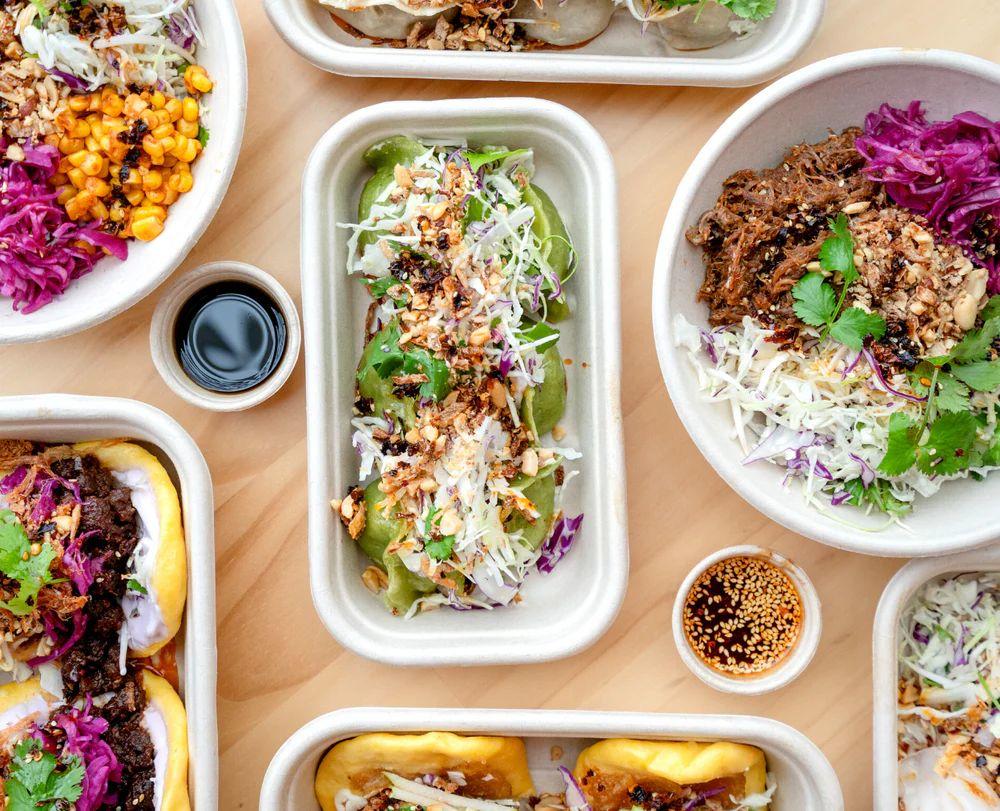

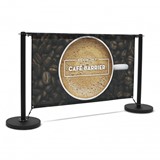


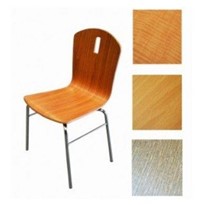
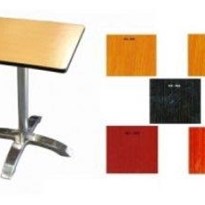
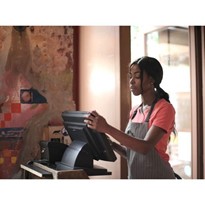
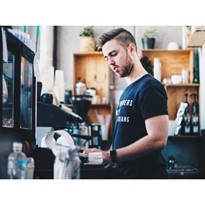
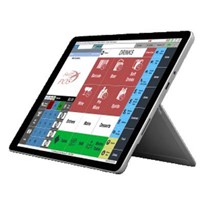
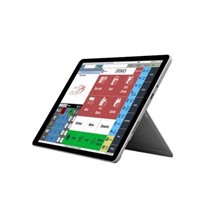
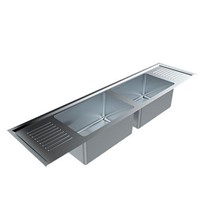


-205x205.jpg)
-205x205.jpg)